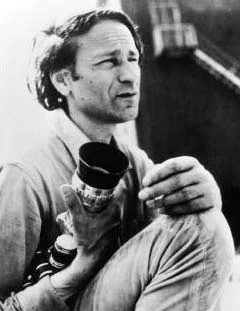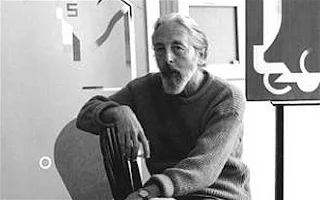Eliyahu Moshe Goldratt was an
Israeli physicist who became a business management guru died he was , 64.
He was the originator of the Optimized Production Technology, the
Theory of Constraints (TOC), the
Thinking Processes, Drum-Buffer-Rope,
Critical Chain Project Management (CCPM) and other TOC derived tools.
(March 31, 1947 - June 11, 2011)
He authored several
business novels and non-fiction works, mainly on the application of a theory of constraints to various manufacturing, engineering, and other business processes.
The processes are typically modeled as resource flows, The constraints typically represent limits on flows. In his book
The Goal, the hero is a manager in charge of a troubled manufacturing operation. At any point in time, one particular constraint (such as inadequate capacity at a machine tool) limits total system throughput, and when the constraint is resolved, another constraint becomes the critical one. The plot of the stories, such as in his book "The Goal", revolve around identifying the current limiting constraint and raising it, which is followed by finding out which is the next limiting constraint. Another common theme is that the system being analyzed has excess capacity at a number of non critical points, which is a waste of resources.
Life
Born in Israel into a rabbinic family, the son of
Avraham-Yehuda Goldrat, Goldratt went on to become a physicist. He obtained his Bachelor of Science degree from
Tel Aviv University, and his Masters of Science and Doctorate of Philosophy degrees from
Bar-Ilan University. Dr. Goldratt died June 11th, 2011 at noon, at his home in Israel.
[3]
Work
Creative Output years
After some experience helping Israeli manufacturers, Goldratt left the academic world to join a company called Creative Output. The company developed and sold a software package, the Optimized Production Technology (OPT). OPT was billed as the first software to provide finite capacity scheduling for production environments. This software and the principles behind it were analyzed by a number of major publications
[4]
Goldratt was actively involved in many controversies such as Cost Accounting x Throughput Accounting
[5] and culminated in the publication of
A Town Without Walls.
[6]
Within the company Goldratt noticed elements that made him uncomfortable
[7] several software implementations did not come close to their estimated potential. After some work Goldratt discovered that the habits, and assumptions (paradigms) of employees and managers prior to using the software were still prominent and negatively influenced results after implementation.
[7]
His answer was the book
The Goal that took 13 months to write. After completion the book was not well received by the company staff and by large publishers.
[7] Finally, with help from Larry Gadd the owner of North River Press, the book was published and became a great success.
[8] After a while Goldratt noticed that many implementations were conducted using the Book but not the software. This caused further stress in the company and Goldratt tried to capture the essence of how to implement the solution directly in what is now known as Drum-Buffer-Rope method. He published
The Race to explain some of the concepts he was working on, and developed a course to teach people how to manage their production using a computer simulation game.
Goldratt tried to move the company down the path of "consulting", trying to help people rethink the way they did things, but Creative Output's declining revenues and Goldratt involvement with anything but the sales of OPT software convinced the shareholders to fire Goldratt (and afterward his closer collaborators).
Avraham Y. Goldratt Institute years
After leaving Creative Output circa 1985 Goldratt created the Avraham Y Goldratt Institute
[9] or AGI (named after his father) to promote the Theory of Constraints and help it be implemented worldwide.
During the time of the AGI Goldratt got deeply involved with the further development of TOC, mainly the
Thinking Processes (and launched it publicly in 1991),
Critical Chain Project Management and other applications. His concepts influenced applications outside manufacturing and supply management, including the field of
sales process engineering.
[10]
In 1997, Goldratt followed his plan to retire from the Institute prior to his 50th birthday.
Goldratt Group years
From the beginning of the 2000s Goldratt created the self-funded Goldratt Group and launched the Viable Vision initiative.
He continued the development of TOC both in the Goldratt Group and in active support for other developments like TOC for Education, TOC in Healthcare, TOC for the Individual (in the continuity of the Odyssey Program, and the publishing of
The Choice).
Writings
Goldratt produced many works. Some of the more noteworthy are:
· The Goal (1984) introduces TOC process for improving organizations and briefly TOC's accounting aspects; it is considered an important work on the topic of focused performance improvement
[by whom?] · The Choice (2008) Talks about Goldratt's thought provoking approach, this time through a conversation with his daughter Efrat, as he explains to her his fundamental system of beliefs. A second edition is planned for publishing which includes Efrat's own notes she made during the conversation with her father, helping the reader determine the true essence of the book.
[citation needed] · Isn't it Obvious (2009) Goldratt's newest book looks into retail. Ilan Eshkoli and Joe Leer Brown are co-authors. The story is about a husband (manager) and wife (purchaser) working in her family's retail chain. An unexpected crisis helps them to find new ways of doing things - ending in success.
Bibliography
Business novels
Nonfiction books
- Eliyahu M. Goldratt and Robert E. Fox. The Race. (1986) ISBN 0-88427-062-9
- Eliyahu M. Goldratt. Essays on the Theory of Constraints. (1987) ISBN 0-88427-159-5
- Eliyahu M. Goldratt. What is this Thing Called Theory of Constraints. (1990) ISBN 0-88427-166-8
- Eliyahu M. Goldratt. The Haystack Syndrome: Sifting Information Out of the Data Ocean. (1991) ISBN 0-88427-184-6
- Eliyahu M. Goldratt. Production the TOC Way (Revised Edition). (2003) ISBN 0-88427-175-7
Other media publications
- Eliyahu M. Goldratt. TOC - Self Learning Program. 8 Video Sessions: Operations; Finance and Measurements; Project Management; Distribution; Marketing; Sales and Buy-In; Strategy and tactics (2002)
- Eliyahu M. Goldratt, Rami Goldratt. TOC Insights". 4 Self learning computer software: Operations; Finance and Measurements; Project Management; Distribution (2003)
- Eliyahu M. Goldratt. Beyond The Goal. Audiobook (2005) ISBN 1-59659-023-8
To see more of who died in 2010 click here
 Gunnar Fischer was a Swedish cinematographer who worked with director Ingmar Bergman on several of the director's best-known films, including Smiles of a Summer Night (1955) and The Seventh Seal (1957).
Gunnar Fischer was a Swedish cinematographer who worked with director Ingmar Bergman on several of the director's best-known films, including Smiles of a Summer Night (1955) and The Seventh Seal (1957). "Fischer's great skill was in monochrome," according to the British film historian Peter Cowie. "He gave Bergman's films that unique expressionist look, with their brilliant contrasts in every gradation of black and white."[4] His style was drawn from the landscapes of Carl Theodore Dreyer and Victor Sjöström, whom he knew well. The International Dictionary of Films and Filmmakers describes Fischer's style as "in the mainstream of the Scandinavian tradition," and celebrates the close and "intensely psychological close-ups and two-shots."[5]
"Fischer's great skill was in monochrome," according to the British film historian Peter Cowie. "He gave Bergman's films that unique expressionist look, with their brilliant contrasts in every gradation of black and white."[4] His style was drawn from the landscapes of Carl Theodore Dreyer and Victor Sjöström, whom he knew well. The International Dictionary of Films and Filmmakers describes Fischer's style as "in the mainstream of the Scandinavian tradition," and celebrates the close and "intensely psychological close-ups and two-shots."[5]









